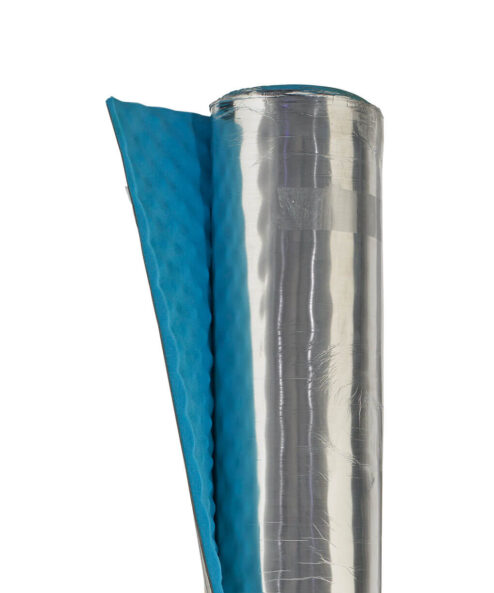Acoustic Pipe Lagging Insulation
From $138.11
From $ 138.11
Pipe Acoustic Lagging is a high-performance sound sheathing material consisting of a mass loaded flexible vinyl bonded to foil facing, with a decoupling layer.
Acoustic Pipe Lagging Insulation
Pipe Acoustic Lagging is a high-performance sound sheathing material consisting of a mass loaded flexible vinyl bonded to foil facing, with a decoupling layer. It is designed to reduce noise break-out from pipes, valves, fan housings and ductwork in commercial, industrial and domestic buildings. The unique construction of Acoustic Pipe Lagging means it acts as both a noise barrier as well as a noise absorber, thereby providing dual benefits. Its highly dense and flexible mass layer provides excellent sound reduction properties, whilst its decoupling layer breaks the vibration path between the substrate and the mass barrier, thus allowing the vinyl external wrap to remain flexible to optimise performance. The external foil facing offers a fire resistant covering and an excellent surface to join adjacent sheets.Reducing Energy Consumption with Pipe Wrap Insulation
It only takes a few simple alterations to conserve the energy used to heat your home. DIY pipe insulation is not a particularly technical project and although it will take some hours to get it done, the effects will be long lasting. More heat will be conserved as it travels around the house, meaning the house will heat up more quickly as you adjust the thermostat. Pipe insulation material is relatively cheap and the energy savings will soon pay off the insulation investment, giving you genuine savings every year. You will also notice a significant water pipe noise reduction with pipework insulation.Acoustic Foil Pipe Insulation
- A high-performance sound sheathing pipe lagging material.
- Consists of a mass loaded flexible vinyl bonded to a foil facing with a decoupling layer – a very effective pipe cladding combination
- Designed to reduce noise break-out from pipes, valves, fan housings and ductwork in commercial, industrial and domestic buildings.
- Lagging pipes serves as both a noise barrier as well as a noise absorber, thereby providing dual benefits.
- Its highly dense and flexible mass layer provides excellent sound reduction properties, whilst its decoupling layer breaks the vibration path between the substrate and the mass barrier, thus allowing the vinyl external wrap to remain flexible to optimise performance.
Choose Your Date
You can choose your preferred delivery or pickup date at the online checkout. We will contact you the same business date to confirm the delivery or pickup arrangements.
Fast Deliveries
Standard orders are delivered within 1-2 business days in metro areas and 1-3 days in regional areas. Some products have a longer lead time as indicated on the product page.
Delivery Pricing
Get your insulation delivered from just $99 in Melbourne, Sydney, Brisbane, Adelaide and Canberra. For regional and island delivery pricing please click here or contact us.
Leave or Sign
If you won't be home on the day of delivery then please leave a note at checkout to let us know where your order can be left. Please choose a dry area out of the rain.

Returns
Returns must be made within 30 days of purchase and will incur a 15% - 30% restocking fee. Some custom made products cannot be returned. For further information, please read our Returns Policy.

Warehouse Pickups
Each brand has a different pickup location. Please contact us for the nearest pickup location in your state. Standard orders are ready for collection within 1-2 days.
How Ordering Works
Regional Delivery Prices
The delivery price will be calculated at the checkout based on your postcode. For a custom delivery quote please contact us.
Pricewise Insulation Returns Policy
Leftover products may be returned to Pricewise Insulation if they meet the below requirements:
- Items must be returned within 30 days of ordering.
- Insulation products must be in their original packaging and condition. We reserve the right not to refund wet or damaged products.
- A 15% restocking fee will apply for glasswool, polyester and rockwool products.
- A 30% restocking fee will apply for foam and rigid insulation products.
Please also note the following:
- We cannot guarantee returns or refunds for custom made products.
- Some manufacturers do not allow returns in certain states. This will be outlined on the product page itself.
You may return the insulation to the warehouse which it was dispatched from or pay for a courier to collect it from your home or building site. Please give our team a call on 1300 729 639 to make arrangements.
If you are not sure how much insulation you require for your project, our team is happy to assist. Please send an email to sales@pricewise.com.au.







